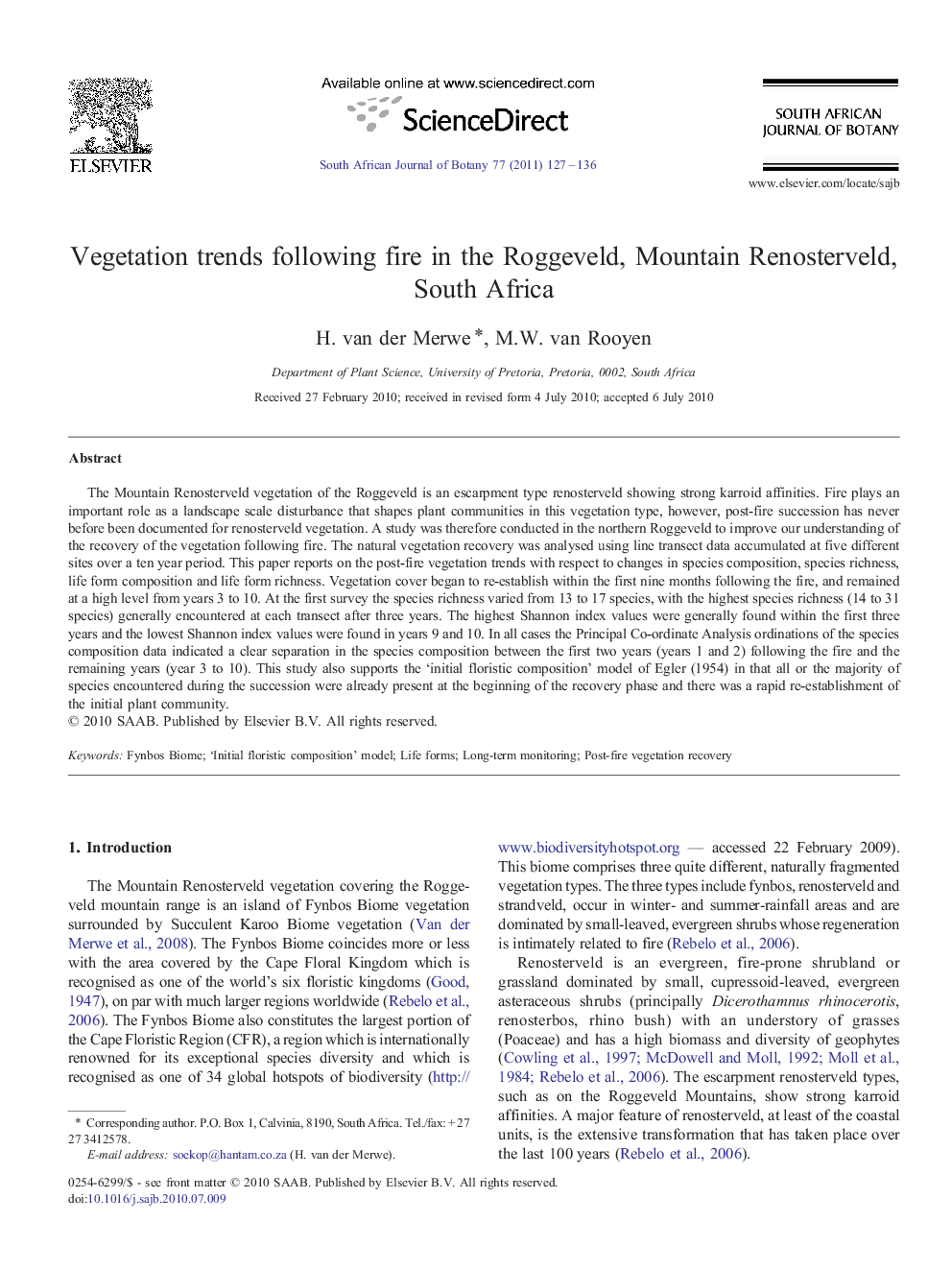| Article ID | Journal | Published Year | Pages | File Type |
|---|---|---|---|---|
| 4521254 | South African Journal of Botany | 2011 | 10 Pages |
The Mountain Renosterveld vegetation of the Roggeveld is an escarpment type renosterveld showing strong karroid affinities. Fire plays an important role as a landscape scale disturbance that shapes plant communities in this vegetation type, however, post-fire succession has never before been documented for renosterveld vegetation. A study was therefore conducted in the northern Roggeveld to improve our understanding of the recovery of the vegetation following fire. The natural vegetation recovery was analysed using line transect data accumulated at five different sites over a ten year period. This paper reports on the post-fire vegetation trends with respect to changes in species composition, species richness, life form composition and life form richness. Vegetation cover began to re-establish within the first nine months following the fire, and remained at a high level from years 3 to 10. At the first survey the species richness varied from 13 to 17 species, with the highest species richness (14 to 31 species) generally encountered at each transect after three years. The highest Shannon index values were generally found within the first three years and the lowest Shannon index values were found in years 9 and 10. In all cases the Principal Co-ordinate Analysis ordinations of the species composition data indicated a clear separation in the species composition between the first two years (years 1 and 2) following the fire and the remaining years (year 3 to 10). This study also supports the ‘initial floristic composition’ model of Egler (1954) in that all or the majority of species encountered during the succession were already present at the beginning of the recovery phase and there was a rapid re-establishment of the initial plant community.
Research Highlights►Study was the first to record vegetation recovery following fire in the Roggeveld. ►Vegetation cover began to re-establish within the first nine months. ►Species composition separated first two years following fire from remaining years. ►Study supports the ‘initial floristic composition’ model of Egler (1954).
